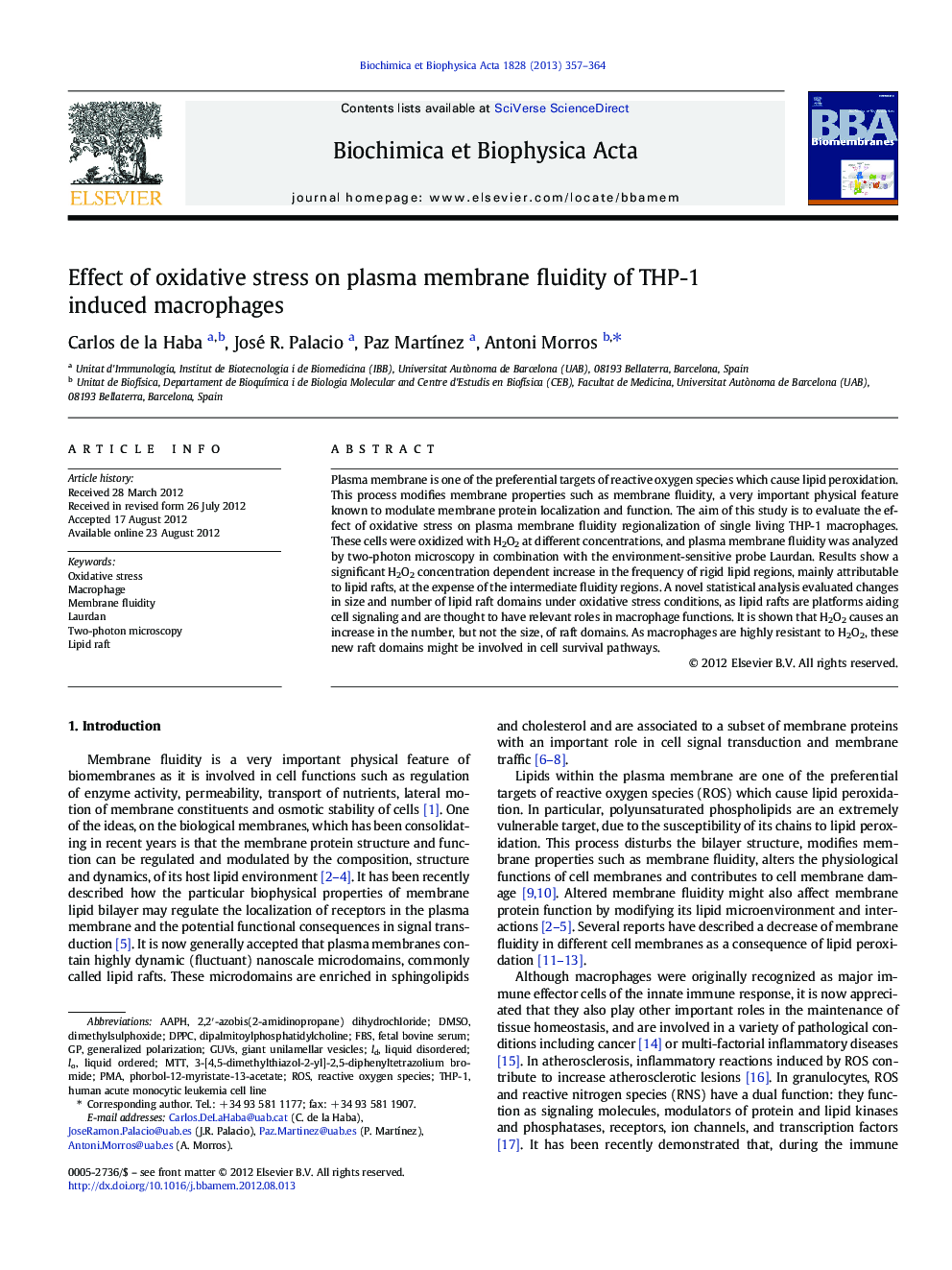| Article ID | Journal | Published Year | Pages | File Type |
|---|---|---|---|---|
| 1944370 | Biochimica et Biophysica Acta (BBA) - Biomembranes | 2013 | 8 Pages |
Plasma membrane is one of the preferential targets of reactive oxygen species which cause lipid peroxidation. This process modifies membrane properties such as membrane fluidity, a very important physical feature known to modulate membrane protein localization and function. The aim of this study is to evaluate the effect of oxidative stress on plasma membrane fluidity regionalization of single living THP-1 macrophages. These cells were oxidized with H2O2 at different concentrations, and plasma membrane fluidity was analyzed by two-photon microscopy in combination with the environment-sensitive probe Laurdan. Results show a significant H2O2 concentration dependent increase in the frequency of rigid lipid regions, mainly attributable to lipid rafts, at the expense of the intermediate fluidity regions. A novel statistical analysis evaluated changes in size and number of lipid raft domains under oxidative stress conditions, as lipid rafts are platforms aiding cell signaling and are thought to have relevant roles in macrophage functions. It is shown that H2O2 causes an increase in the number, but not the size, of raft domains. As macrophages are highly resistant to H2O2, these new raft domains might be involved in cell survival pathways.
Graphical abstractFigure optionsDownload full-size imageDownload high-quality image (123 K)Download as PowerPoint slideHighlights► Oxidative stress causes an increase in macrophage plasma membrane rigidity. ► H2O2 causes an increase in the number, but not the size, of raft domains. ► Macrophage is highly resistant to H2O2 as viability, in our conditions, is above 80%. ► New raft domains in macrophages might be involved in cell survival pathways.
